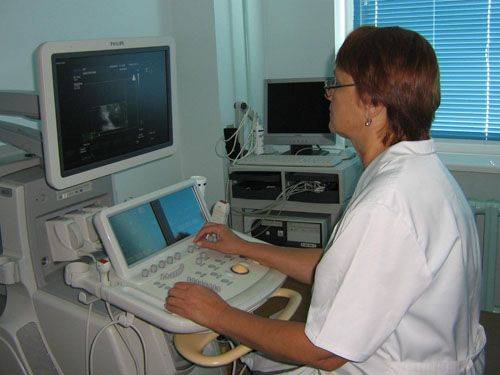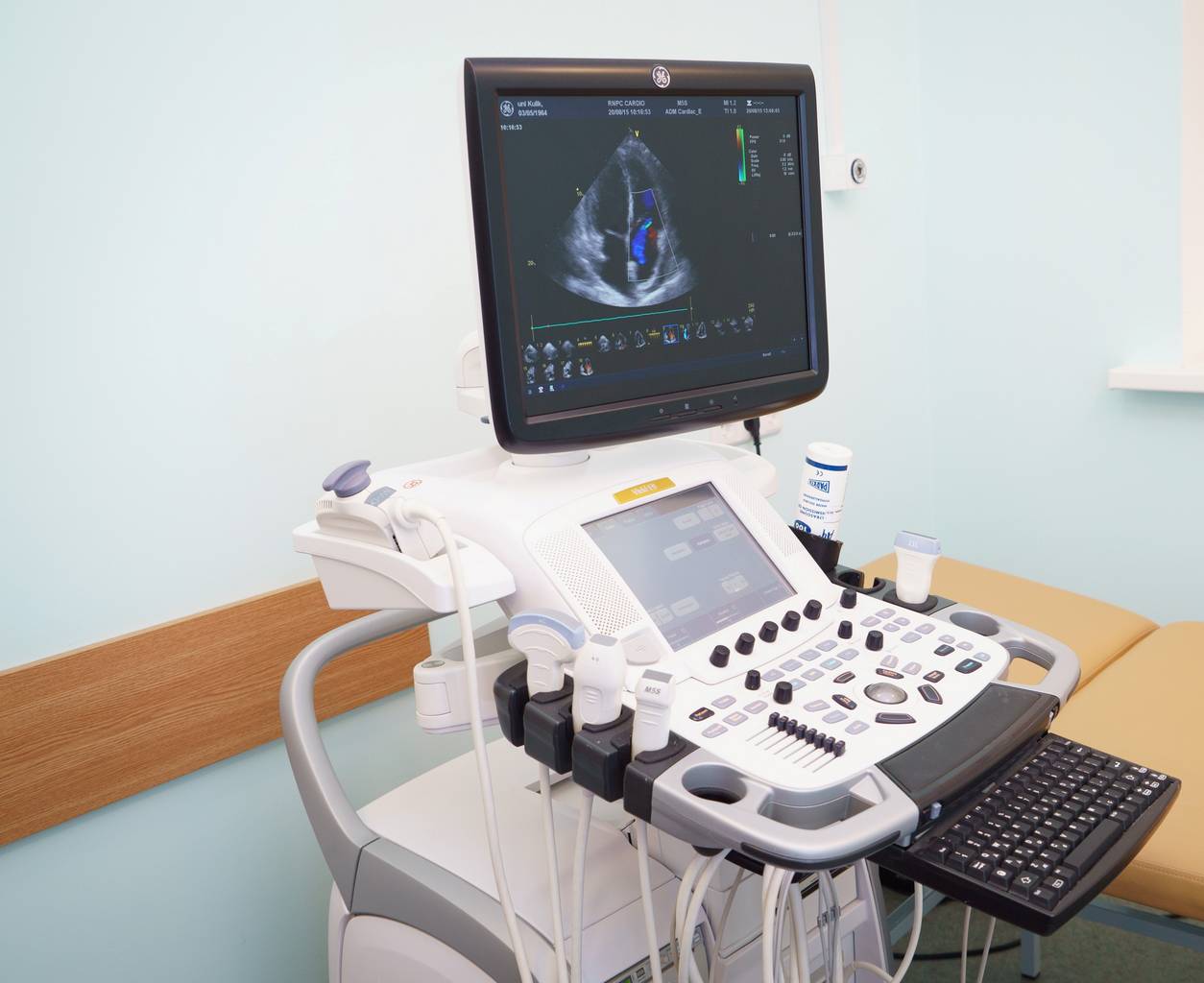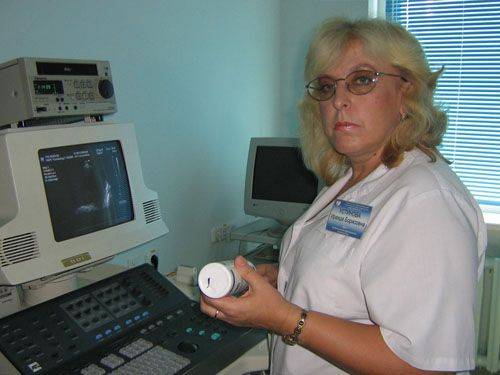Diagnostic ultrasound


Echocardiography (ECHOCG or cardiac ultrasound) are used to establish cavitary dimensions and heart wall thickness, as well as to assess functions of valve apparatus, define impaired contraction/relaxation function, and characterize intracardiac blood flow motion. It allows for the diagnosis of coronary heart disease, angina pectoris, myocardial infarction, and muscle and outer heart layer defects. It is also use for preventive examination as it may help to establish heart diseases at the earliest stages. Indications for EchoCG may include chest pains, altered electrocardiograms, heart murmur, heart rhythm disturbances, hypertension, congenital heart defects, signs of heart failure, etc.


Stress-echocardiography (stress-EchoCG) represents a highly informative examination that helps both to define electrocardiographic signs of myocardial ischemia, and to assess contractile function disorders, post-exercise (physical or medical) intracardiac hemodynamic changes.
Vascular ultrasonic Doppler examination helps to establish vascular circulation disorders. This examination is performed on head and neck vessels, and lower/upper limb veins. The examination is highly informative both concerning venous and arterial circulation. Vascular ultrasonic Doppler examination is used to investigate pattern of vascular flow, its disorders caused by atherosclerotic plaques, thrombi and inflammation. Findings received from the examination contribute to a successful treatment of cardiovascular and neurological diseases.
Abdominal ultrasonography helps to establish hepatic, pancreatic, splenic, and cholecystic disorders, as well as intestinal, abdominal aortic, gut, rectal, and abdominal vascular disorders. It defines their dimensions, features and condition, and detects tumors, bleedings, calculi, and abdominal and retroperitoneal abnormalities. Indications for Abdominal US examination include virtually all kinds of pain in abdomen, sensation of heaviness in right hypochondrium, bitter taste in the mouth, flatulence after meal, excessive gas, and pain attacks in right hypochondrium or girdle pain.









